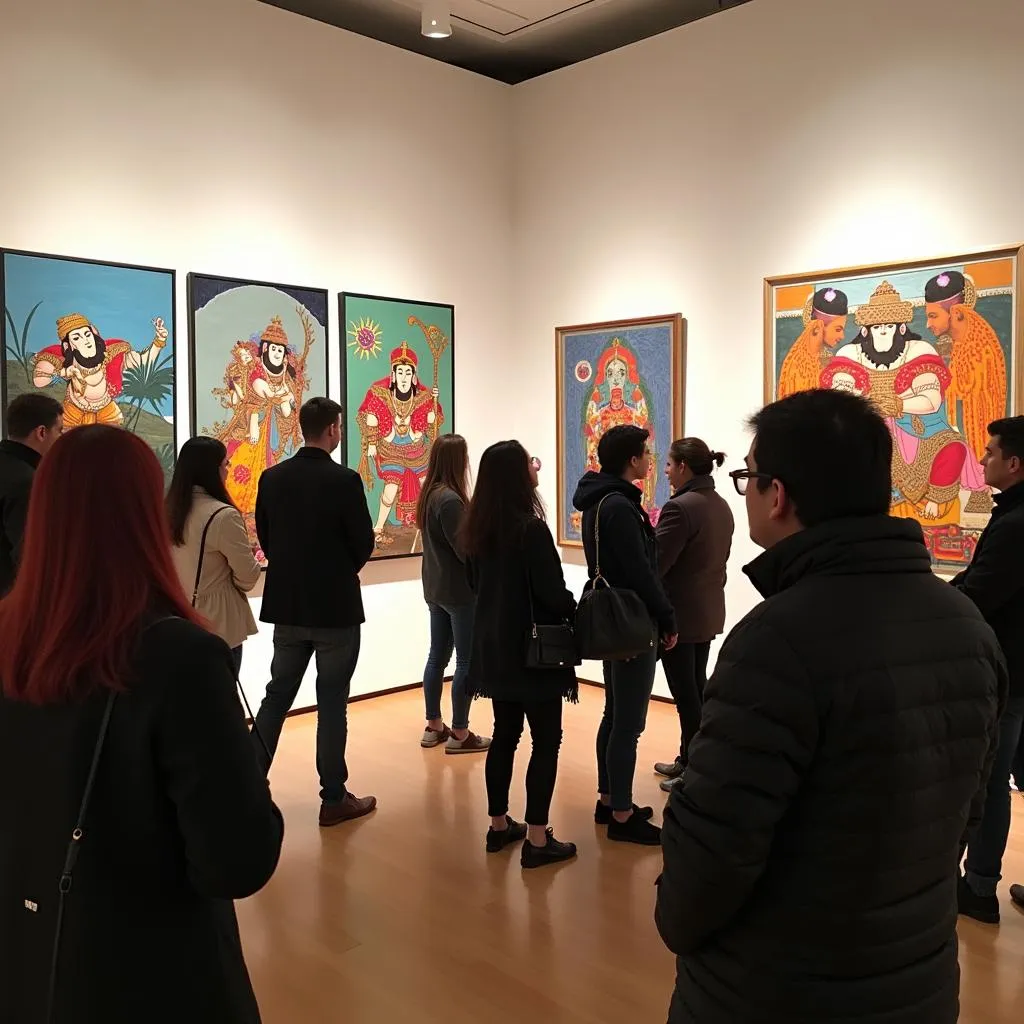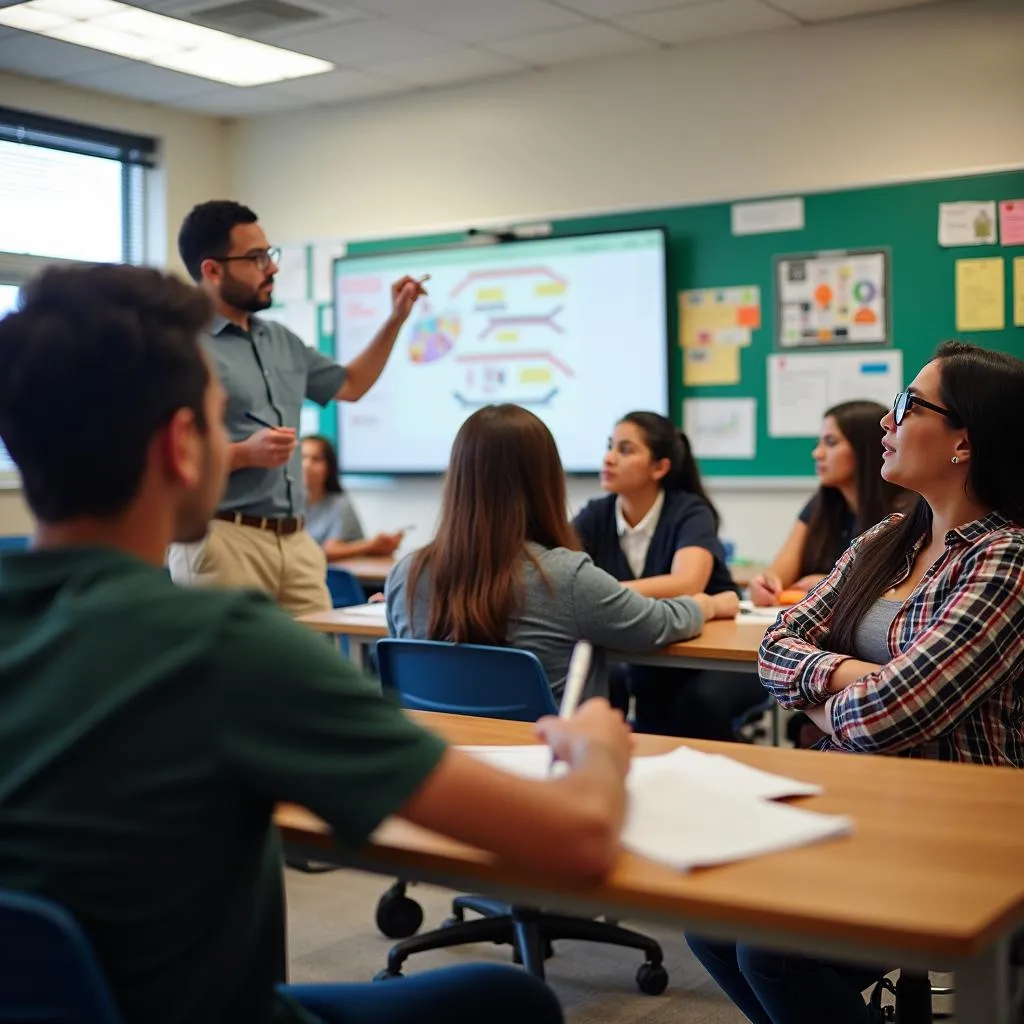As an experienced IELTS instructor, I’m excited to share this comprehensive IELTS Reading practice test focused on how art installations in schools promote cultural awareness. This topic not only aligns with current educational trends but also provides an excellent opportunity to enhance your reading skills and cultural knowledge. Let’s dive into the passages and questions that will help you prepare for the IELTS Reading section.
Nội dung bài viết
- Passage 1 – Easy Text
- The Role of Art in Education
- The Impact on Student Learning
- Passage 2 – Medium Text
- Implementing Effective Art Installation Programs
- Overcoming Challenges and Measuring Success
- Passage 3 – Hard Text
- The Intersection of Art, Technology, and Cultural Awareness
- The Global Classroom: Breaking Down Cultural Barriers
- Questions
- Passage 1
- Passage 2
- Passage 3
- Answer Key
Passage 1 – Easy Text
The Role of Art in Education
Art has long been recognized as a powerful tool for education, particularly when it comes to fostering cultural awareness and understanding. In recent years, schools around the world have begun to embrace the use of art installations as a means of broadening students’ horizons and promoting cross-cultural dialogue. These installations, which can range from sculptures and murals to interactive exhibits, serve as visual and tactile learning aids that complement traditional classroom instruction.
One of the primary benefits of art installations in schools is their ability to spark curiosity and encourage exploration of different cultures. When students are exposed to artwork from various cultural backgrounds, they naturally begin to ask questions and seek out information about the artists, their inspirations, and the societies that produced them. This inquiry-based learning approach not only enhances cultural awareness but also develops critical thinking skills that are essential for success in the modern world.
Moreover, art installations can serve as a catalyst for discussions about diversity, inclusion, and global citizenship. By presenting diverse artistic perspectives, schools create opportunities for students to engage in meaningful conversations about cultural differences and similarities. These discussions can help break down stereotypes and foster empathy, which are crucial elements in building a more inclusive and understanding society.
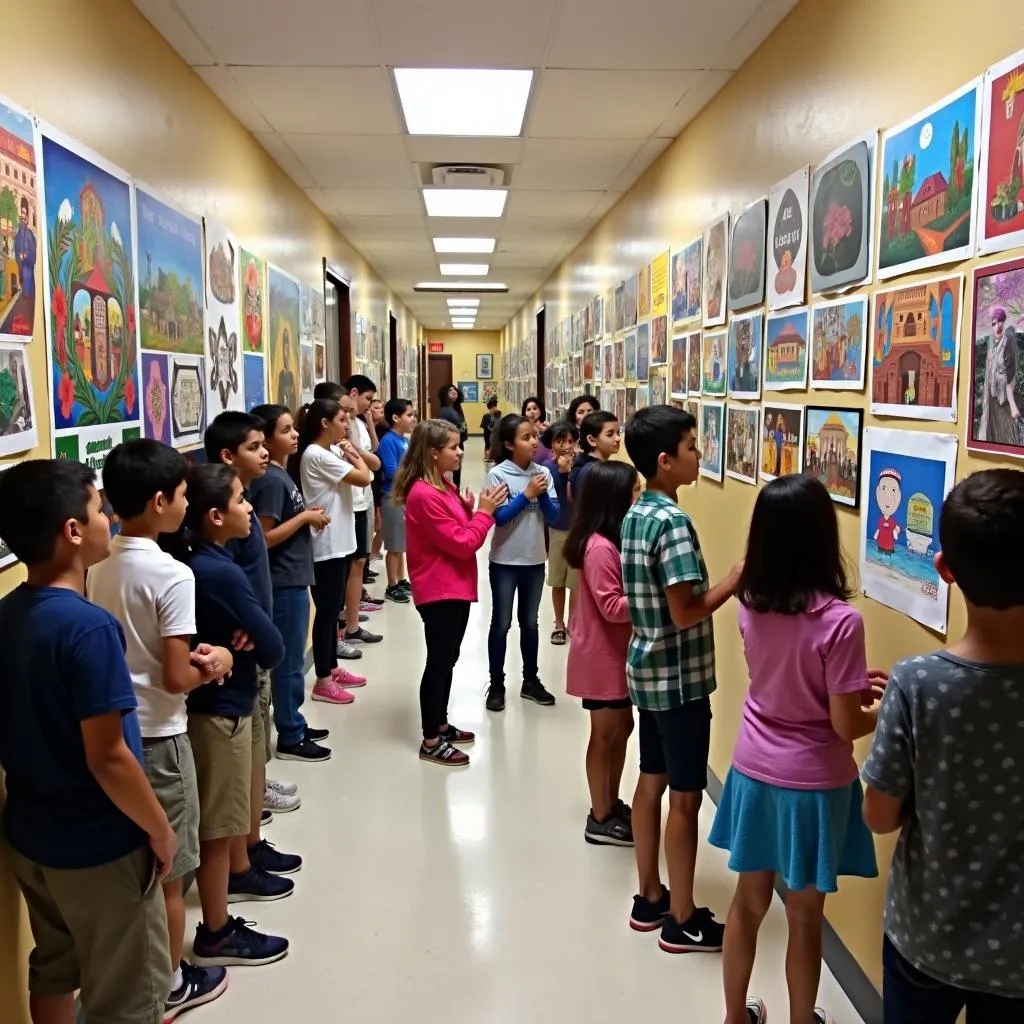 Art installations promoting cultural awareness in schools
Art installations promoting cultural awareness in schools
The Impact on Student Learning
Research has shown that the presence of art installations in educational settings can have a significant impact on student learning outcomes. A study conducted by the National Endowment for the Arts found that students who were regularly exposed to art in their school environment demonstrated improved academic performance across multiple subjects, including reading, mathematics, and social studies. This improvement was particularly notable among students from low-income backgrounds, suggesting that art installations can play a role in narrowing the achievement gap.
Furthermore, the tactile and visual nature of art installations makes them particularly effective for engaging students with different learning styles. Visual learners benefit from the opportunity to see and analyze artistic representations of cultural concepts, while kinesthetic learners can interact with three-dimensional installations in a hands-on manner. This multi-sensory approach to cultural education ensures that a wider range of students can access and internalize important cultural lessons.
The use of digital exhibitions in teaching cultural history has also become increasingly popular, complementing physical art installations in schools. These digital platforms allow students to explore global art and cultural artifacts virtually, expanding their cultural horizons beyond the physical limitations of their school environment.
Passage 2 – Medium Text
Implementing Effective Art Installation Programs
While the benefits of art installations in promoting cultural awareness are clear, implementing effective programs requires careful planning and consideration. Schools must navigate several challenges to ensure that their art installation initiatives achieve the desired educational outcomes.
One of the primary considerations is the selection of appropriate artwork. Educators and administrators must curate installations that are not only visually appealing but also culturally relevant and educationally valuable. This process often involves collaboration with local artists, cultural institutions, and community members to ensure that the selected pieces accurately represent diverse cultural perspectives and avoid perpetuating stereotypes or misrepresentations.
Another crucial aspect is the integration of art installations into the curriculum. To maximize the educational impact of these installations, teachers must be provided with the necessary resources and training to effectively incorporate them into their lesson plans. This may involve developing supplementary materials, such as guided questions or interactive activities, that encourage students to engage critically with the artwork and its cultural context.
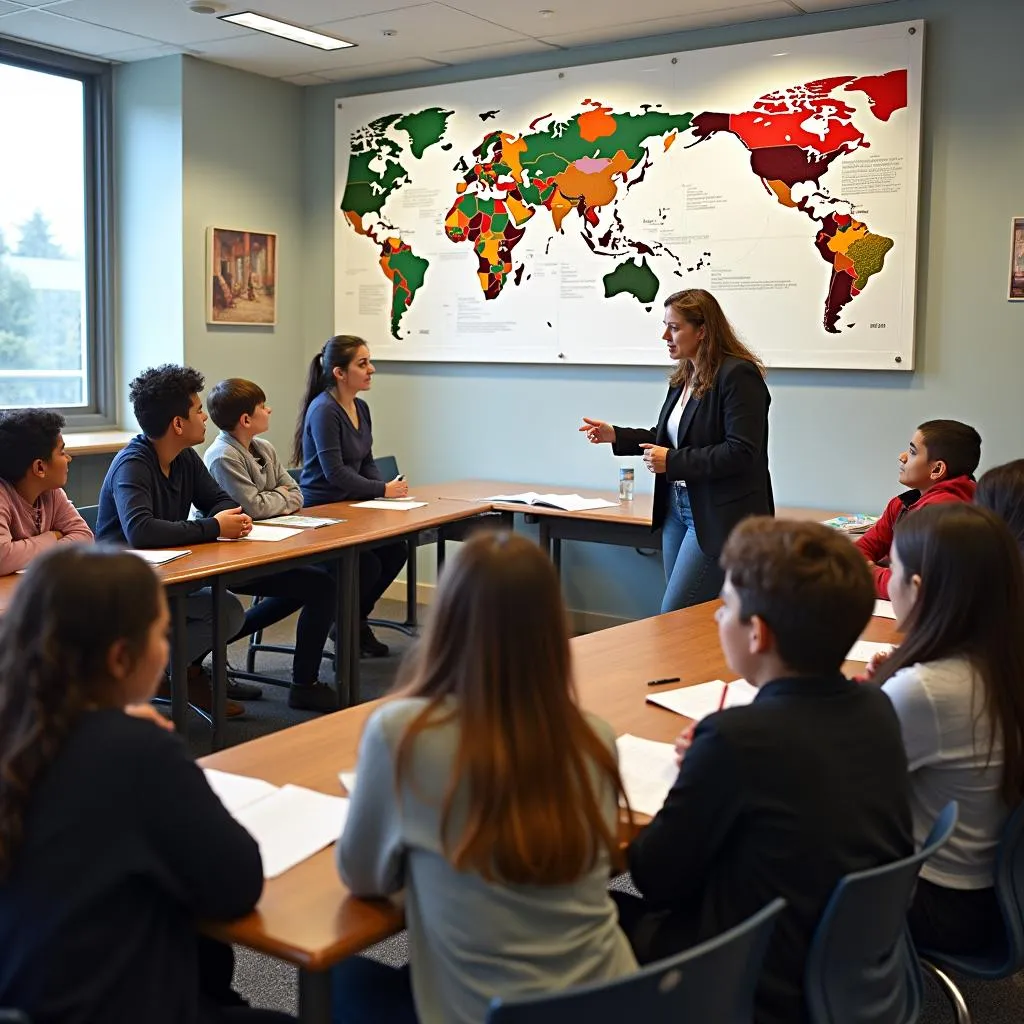 Students engaging with an art installation during a cultural lesson
Students engaging with an art installation during a cultural lesson
Overcoming Challenges and Measuring Success
Despite the potential benefits, implementing art installation programs in schools can face several obstacles. Budget constraints often pose a significant challenge, as acquiring and maintaining high-quality art installations can be costly. To address this issue, many schools have turned to partnerships with local artists and arts organizations, as well as seeking grants and community sponsorships to fund their initiatives.
Another challenge lies in measuring the impact of art installations on cultural awareness and student learning. Traditional assessment methods may not fully capture the nuanced ways in which students engage with and internalize cultural concepts through art. As a result, educators are developing new evaluation tools, such as reflective journals, project-based assessments, and long-term tracking of student attitudes and behaviors related to cultural awareness.
The role of school partnerships in promoting intercultural activities can significantly enhance the effectiveness of art installation programs. By collaborating with schools from different cultural backgrounds, institutions can create more diverse and authentic art experiences for their students.
Passage 3 – Hard Text
The Intersection of Art, Technology, and Cultural Awareness
As educational paradigms continue to evolve, the role of art installations in promoting cultural awareness is being redefined by technological advancements. The convergence of art and technology has given rise to innovative forms of cultural expression and engagement that extend far beyond traditional static displays.
Augmented reality (AR) and virtual reality (VR) technologies are at the forefront of this transformation, offering immersive experiences that transport students to different cultural contexts without leaving the classroom. These technologies enable schools to create virtual art installations that can be constantly updated and expanded, providing a dynamic and interactive platform for cultural exploration. For instance, students can use AR-enabled devices to scan physical artworks and access additional layers of information, such as artist interviews, historical context, or related cultural artifacts.
Moreover, the integration of artificial intelligence (AI) in art installations is opening up new possibilities for personalized cultural learning experiences. AI algorithms can analyze students’ interactions with digital art installations and tailor the content to individual interests and learning styles. This adaptive approach ensures that each student receives a unique and engaging cultural education journey, maximizing the impact of the art installation program.
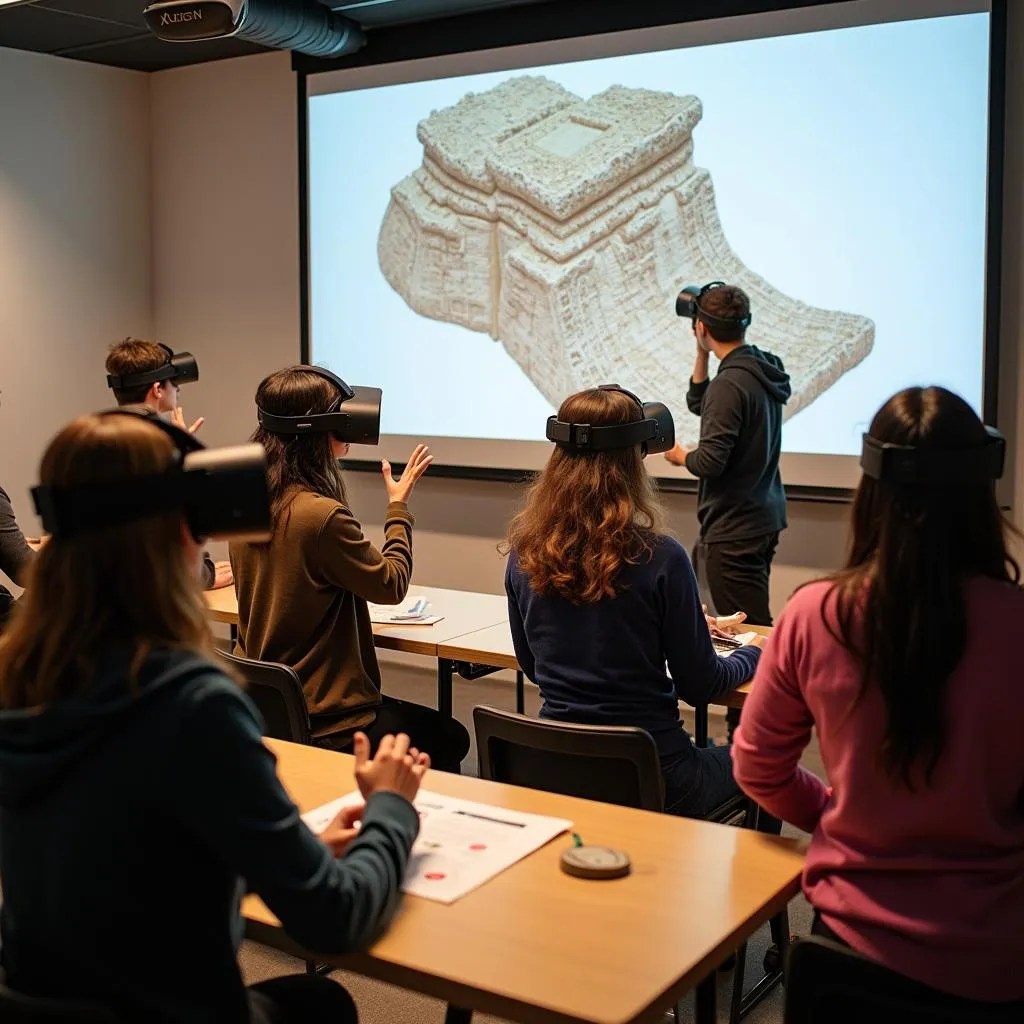 Students using VR to explore a cultural art installation
Students using VR to explore a cultural art installation
The Global Classroom: Breaking Down Cultural Barriers
The advent of networked art installations has further expanded the potential for cultural exchange in educational settings. Schools can now participate in global art projects that connect students from different countries in real-time, fostering cross-cultural collaboration and understanding. These initiatives often involve the creation of collective digital artworks that incorporate elements from various cultural traditions, encouraging students to explore similarities and differences in a collaborative and creative context.
The impact of virtual exchanges on student cultural awareness has been significantly enhanced through these networked art installations, allowing for more meaningful and immersive intercultural experiences.
Furthermore, the use of data visualization techniques in art installations has emerged as a powerful tool for illustrating complex cultural phenomena. By transforming statistical information about global cultures into visually compelling and interactive displays, schools can help students grasp abstract concepts related to cultural diversity, migration patterns, and global interconnectedness. These data-driven art installations not only enhance cultural awareness but also promote data literacy and critical thinking skills that are essential in our increasingly data-centric world.
As educational policies address the needs of multicultural classrooms, the integration of technologically advanced art installations becomes increasingly important in creating inclusive and culturally rich learning environments.
Questions
Passage 1
-
Multiple Choice:
What is one of the primary benefits of art installations in schools according to the passage?
A) They improve students’ artistic skills
B) They spark curiosity and encourage exploration of different cultures
C) They increase school funding
D) They replace traditional classroom instruction -
True/False/Not Given:
Art installations in schools have been shown to improve academic performance across multiple subjects. -
Matching Information:
Match the following benefits to the correct group:
A) Visual learners
B) Kinesthetic learners
C) Students from low-income backgrounds- Benefit from hands-on interaction with three-dimensional installations
- Show notable improvement in academic performance
- Can analyze artistic representations of cultural concepts
-
Sentence Completion:
Complete the sentence:
The National Endowment for the Arts found that students regularly exposed to art in school demonstrated improved performance in , , and ___.
Passage 2
-
Identifying Information (True/False/Not Given):
Schools must collaborate with local artists and cultural institutions to select appropriate artwork for installations. -
Matching Headings:
Match the following headings to the paragraphs in Passage 2:
A) Challenges in Implementation
B) Curriculum Integration
C) Funding Solutions
D) Impact Assessment -
Short-answer Questions:
What are two challenges mentioned in implementing art installation programs in schools? -
Multiple Choice:
Which of the following is NOT mentioned as a method for evaluating the impact of art installations on cultural awareness?
A) Reflective journals
B) Project-based assessments
C) Standardized tests
D) Long-term tracking of student attitudes
Passage 3
-
Matching Features:
Match the following technologies with their applications in art installations:
A) Augmented Reality (AR)
B) Virtual Reality (VR)
C) Artificial Intelligence (AI)- Provides immersive experiences transporting students to different cultural contexts
- Allows scanning of physical artworks to access additional information
- Tailors content to individual interests and learning styles
-
Diagram Label Completion:
Complete the diagram below using words from the passage:
Global Classroom Art Projects- Connect students from ___ countries
- Foster cross-cultural and
- Involve creation of ___ digital artworks
-
Identifying Writer’s Views (Yes/No/Not Given):
The writer believes that networked art installations are more effective than traditional art installations in promoting cultural awareness. -
Summary Completion:
Complete the summary using words from the list below:
Art installations in schools have evolved with technology, incorporating and to create immersive cultural experiences. These technologies allow for learning experiences and global collaboration. The use of in art installations helps students understand complex cultural phenomena and promotes data literacy.Word List:
A) AR B) VR C) personalized D) standardized E) data visualization F) artificial intelligence
Answer Key
- B
- True
- A-3, B-1, C-2
- reading, mathematics, and social studies
- True
- A) Challenges in Implementation, B) Curriculum Integration, C) Funding Solutions, D) Impact Assessment
- Budget constraints, measuring the impact
- C
- A-2, B-1, C-3
- different, collaboration, understanding, collective
- Not Given
- A, B, C, E
This IELTS Reading practice test on how art installations in schools promote cultural awareness provides a comprehensive exploration of the topic while challenging your reading comprehension skills. Remember to practice time management and develop strategies for each question type to improve your performance on the actual IELTS exam. Good luck with your studies!
